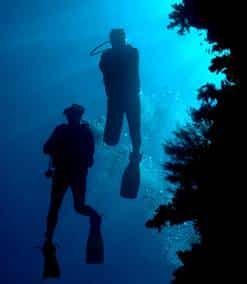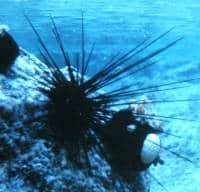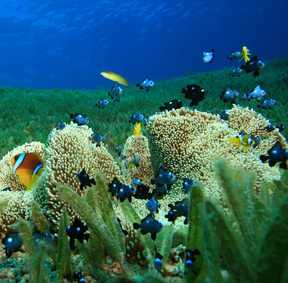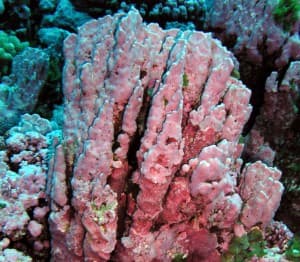Coral Reef Echinoderms
Coral reef echinoderms (Phylum Echinodermata) include a variety of familiar marine creatures that one would not recognize as close relatives. This page provides an introduction to the five classs of these animals commonly found associated with coral reefs.
The name “Echinoderm” literally means “spiny-skinned”, a trait that shared by all members of the group. Here, we shall briefly introduce the five most common types found in coral reef environments. These are the sea stars, brittle stars, sea cucumbers, sea urchins, and crinoids.





